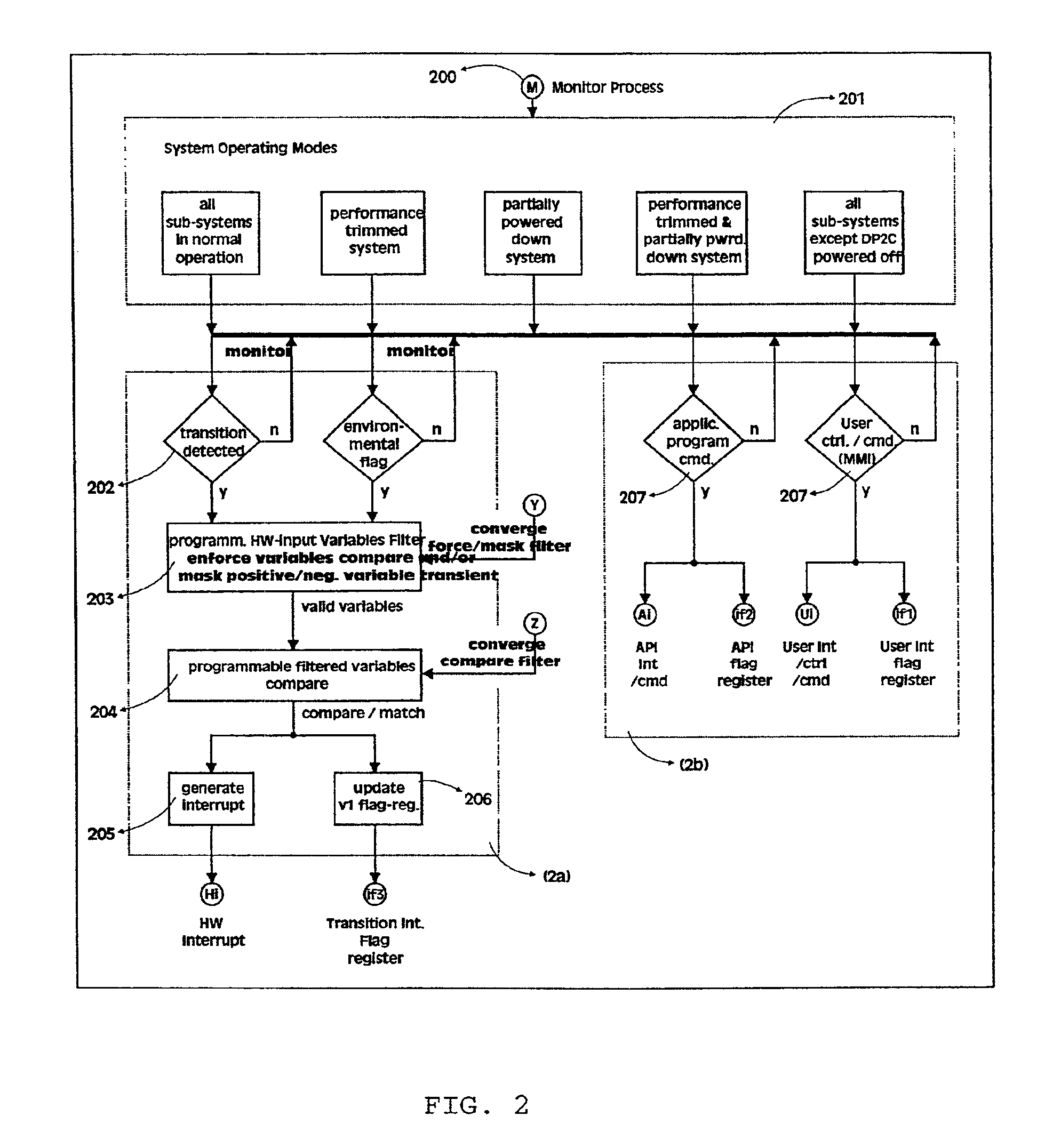System and method for converging current system performance and power levels to levels stored in a table using a successive approximation algorithm
a technology of power level and current system performance, applied in the direction of data processing power supply, sustainable buildings, instruments, etc., can solve the problems of increasing power consumption and heat generation, and sufficient battery life, etc., to achieve the effect of optimizing power consumption and performance requirements
- Summary
- Abstract
- Description
- Claims
- Application Information
AI Technical Summary
Benefits of technology
Problems solved by technology
Method used
Image
Examples
Embodiment Construction
[0027]The Dynamic Performance / Power Convergence (hereinafter called “DP2C”) is a process for dynamically controlling and managing the performance and the power consumption of energy consuming elements within an electronic system. Both system performance and the applied system power / voltages are controlled by a DP2C specific convergence process adjusting the system performance in real-time to the requirements of the application and the momentary prevailing operating situation. DP2C, in more detail, controls the performance and the power requirements of ECUs. The objectives are to provide the optimum of system performance for a given processing- / application-situation in time while keeping the overall system power consumption at a minimum.
[0028]The principle is advantageous to be used for embedded electronic system and in specific for System-On-a-Chip (SOC) solutions using on chip multi-control-element structures. The beneficial attributes are (a) lowest overall system power consumptio...
PUM
 Login to View More
Login to View More Abstract
Description
Claims
Application Information
 Login to View More
Login to View More - R&D Engineer
- R&D Manager
- IP Professional
- Industry Leading Data Capabilities
- Powerful AI technology
- Patent DNA Extraction
Browse by: Latest US Patents, China's latest patents, Technical Efficacy Thesaurus, Application Domain, Technology Topic, Popular Technical Reports.
© 2024 PatSnap. All rights reserved.Legal|Privacy policy|Modern Slavery Act Transparency Statement|Sitemap|About US| Contact US: help@patsnap.com










